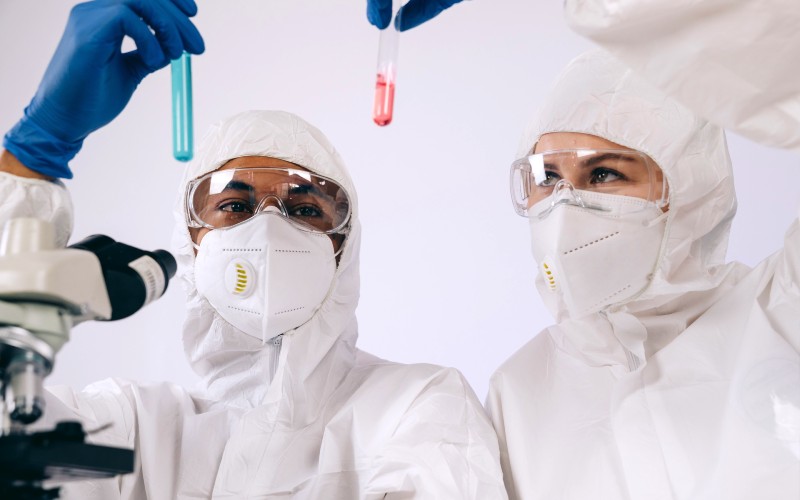Lou Gehrig’s disease, often known as amyotrophic lateral sclerosis (ALS), is a neurodegenerative condition that affects nerve cells in charge of regulating voluntary muscle activity. Data from the Centers for Disease Control (CDC) show that in the United States alone, almost 5000 individuals are diagnosed with ALS every year. The disease causes progressive muscular atrophy and paralysis, which can lead to death.
As of now, no cure for this disease has been discovered, and the available treatment options are limited. However, some recent advancements in the treatment of ALS symptoms may give hope to those suffering from the disease. Some of the advancements include the discovery of novel genes and stem cell therapy.
Understanding the Science Behind ALS
Given the considerable number of people affected by this illness, it is not surprising that there is a relentless interest in the question: “What is ALS disease?” Although the precise etiology of amyotrophic lateral sclerosis is not yet entirely understood, it has been determined that a number of factors play a role in its progression. The malfunction and eventual death of motor neurons and the nerve cells that regulate voluntary muscular movement is one of the main causes underlying ALS. Other variables that are known causes of the disease include:
1. Oxidative stress.
2. Mitochondrial malfunction.
3. Protein misfolding.
4. Aberrant immune system responses.
Superoxide dismutase 1 (SOD1) gene mutation is a well-known genetic factor that causes the disorder. This gene’s mutations can cause a buildup of toxic proteins that harm motor neurons, causing them to malfunction and eventually die. Studies show that the development of ALS has also been linked to other genes, such as C9orf72, FUS, and TARDBP.
The onset of ALS symptoms is also influenced by environmental factors. These include exposure to several chemicals, including lead, mercury, and pesticides.
Current Treatment Options for ALS
Radicava
Radicava ORS® (edaravone), an oral medication that slows progression, was given FDA approval in 2017. The treatment involves:
- a 14-day cycle of intravenous medication;
- the following 14-day period during which no medication is administered.
As free radicals are known to speed up the advancement of ALS, Radicava® works by lessening the harm they do to the body.
Combination Therapy
AMX0035 is a combination therapy focusing on two distinct progression mechanisms. It comprises two medications:
1. Sodium phenylbutyrate.
2. Tauroursodeoxycholic acid.
These cooperate to lessen inflammation and nerve cell loss. In clinical trials, patients receiving AMX0035 had a drop in the progression of their condition. The combination therapy of riluzole and edaravone has also been shown to slow the progression of ALS (doi: 10.4103/aian.aian_1083_21). However, the effects were proven to be short-term.
Gene Therapy
Gene therapy involves inserting functional copies of the damaged genes into the patient’s cells. Researchers are investigating strategies to employ gene therapy to increase the production of the survival motor neuron protein (SMN). Gene therapy has been demonstrated in animal experiments to raise SMN levels and enhance motor function in mice with ALS symptoms.
Recent Breakthroughs in ALS Research
Novel Genes
Novel ALS-related genes, including C9orf72, TBK1, and NEK1, have been discovered recently (doi: 10.1016/S1474-4422(17)30401-5). The clinical implications of these genetic mutations are still being studied. However, it is a significant step towards a better understanding which can aid the development of effective treatments.
Stem Cell Therapy
Stem cells can differentiate within the body into several cell types. The cells that control muscular movement, known as motor neurons, can be replaced by stem cells in ALS patients. Due to the potential of regenerating damaged motor neurons, stem cell therapy has demonstrated promise in ALS treatment.
Recent research has hypothesized that patients who receive stem cell therapy can have better muscle functions and may live longer (doi: 10.1080/13543784.2019.1627324). Additional research on how genome editing might improve stem cell therapy as a potential treatment is ongoing.
Hope for ALS Patients: Promising New Treatments on the Horizon
Although all these novel therapies are still in the research and testing phases, they represent a ray of hope for patients and their families. Researchers are working to understand the underlying causes of amyotrophic lateral sclerosis and create novel approaches. So, there is grounds for optimism regarding future treatments for the disorder.
In Conclusion
The focus of the question, “What is ALS disease” has transitioned from its definition to the search for a cure. Although there is no known cure for the disorder, notable treatments slowing its progression have been developed. Among them, the use of stem cells and gene therapy has demonstrated promise in improving the disease symptoms and patients’ quality of life. Thanks to ongoing research and advancements in treatment, there is a chance that ALS may one day be curable. How long do you think this process can take?


